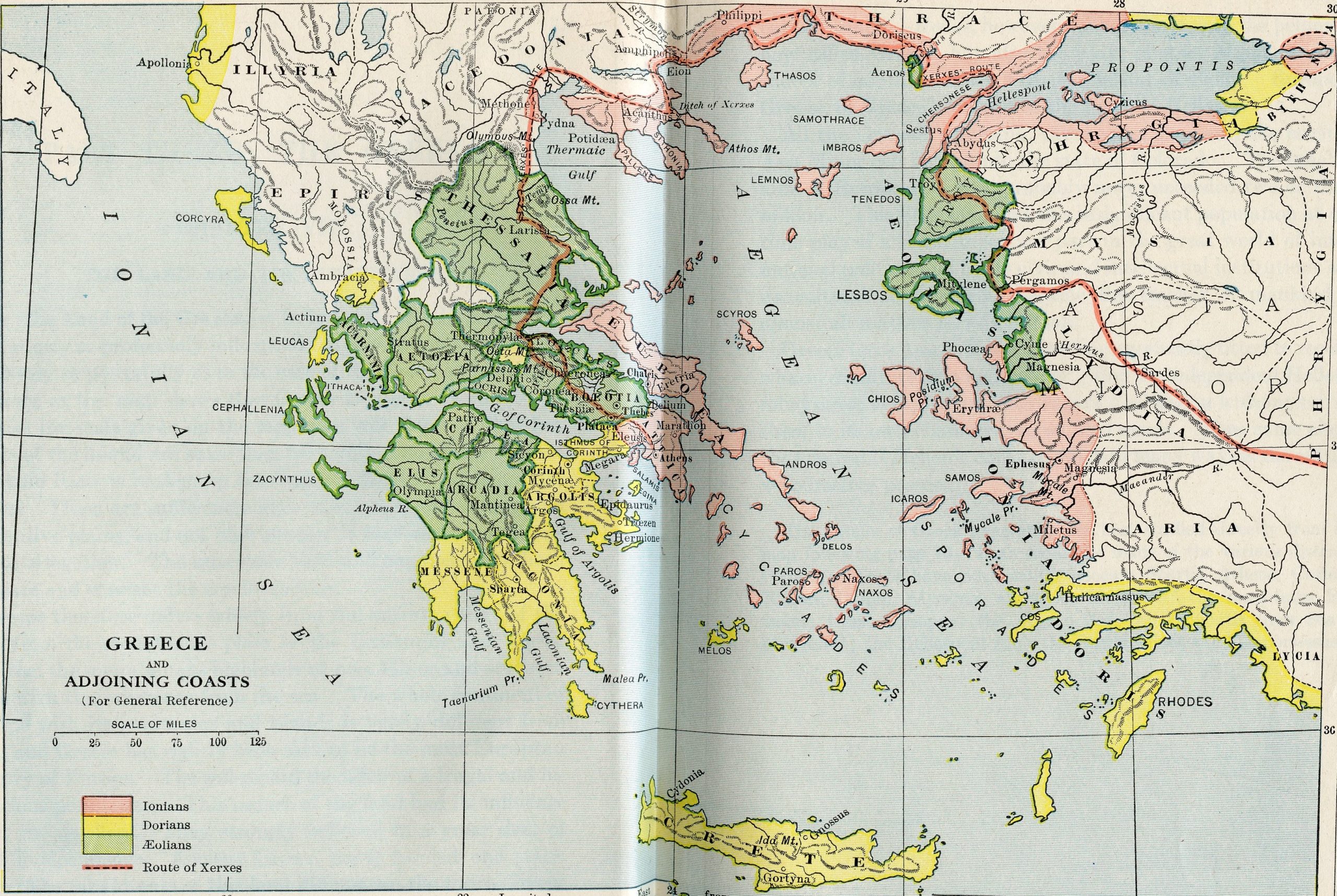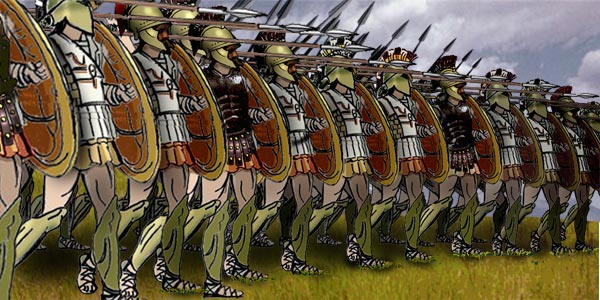The following is an excerpt (pages 70-71) from Ancient and Medieval History (1946) by Francis S. Betten, S.J. Although some information may be outdated, the Catholic historical perspective it provides remains pertinent. Use the link at the bottom of post to read the previous/following pages. Use the Search box above to find specific topics or browse using the Resources tab above.
PART THREE: THE GREEKS
CHAPTER VIII
THE LAND AND ITS INHABITANTS
74. The Land of the Greeks. — In few cases has the geography of a country so profoundly influenced the population and affected its history so powerfully as in the case of the Greek and his land. A glance at the map shows that Greece is almost all coast. If you use the scale given on the map, you will discover that few points of the inland are more than fifty miles away from the sea. The land itself is broken up into smaller districts by mountain ranges. These are sufficiently high to separate the valleys and diminutive plains, and not high enough to prevent human intercourse altogether. The numerous bays and channels, too, both separate and connect the small sections.
Greece therefore differs widely from the narrow valley of the Nile, from the monotonous plain of the Euphrates and Tigris, and from the mountainous highlands of Asia Minor and northern Syria with their distance from the sea. The whole continent of Europe with its peninsulas and islands is vastly different, from Asia, and Greece has rightly been said to be the most European country of Europe. The soil repaid the labor of a frugal and industrious population. This nature of the land had its influence upon the dwellers. They strongly believed in a great deal of local independence. Ancient Greece never formed one state.
75. The inhabitants of this land did not use the terms Greece and Greek. They referred to themselves as Hellenes, and to their land as Hellas, though these names do not occur in the very earliest times. Hellas, however, included not only the peninsula now called Greece, but also the coast of Asia Minor, and the shores of southern Italy with the island of Sicily. European Greece, or Greece proper, was the heart of Hellas.
All the Grecian peninsula, the Aegean Sea, and the coast of Asia Minor can be put into the state of Colorado. The inhabitants of European Greece probably never exceeded two or three million. This little land and this insignificant population at one time played a most important part in the great world of international politics, and by its civic and intellectual institutions and its cultural achievements became the teacher of mankind in almost all matters merely human.
Greece faces Asia. It was therefore excellently fitted to receive whatever culture Asia had to offer. But the independent Hellenic mind never accepted any elements of civilization without suiting them to its own character, views, and needs. Thus came about the admirable Hellenic culture, which in many ways is the culture we ourselves possess.
The details of Greek geography are best studied directly from the map following page 70. Lists should be made of the various districts. (Which districts have no coasts?) Locate Sparta, Athens, Corinth, Thebes, Delphi, Mycenae, Olympia, Messenae; the mountains Parnassus, Ossa, Olympus; the Aegean Sea, the Propontis (now Sea of Marmara); the Hellespont (now the Dardanelles), the Peloponnesus.


